One of the worst droughts in a century, compounded by high food prices and unremitting political strife, is spawning an immense humanitarian crisis on the Horn of Africa. Thousands of Somalis are fleeing their homeland each week; most of those who survive the brutal journey end up in refugee camps in neighboring Kenya. Aid agencies are calling it the worst drought in 60 years. Although centered on Somalia, which lacks a functioning government and suffers from constant battles with Islamic rebels, the crisis has also affected people in Djibouti, Ethiopia, Kenya, and Uganda. Reports suggest parts of Somalia may already be on the verge of famine, a repeat of the emergency situation two decades ago. Resources are woefully inadequate. "Desperate hunger is looming across the Horn of Africa and threatening the lives of millions who are struggling to survive in the face of rising food prices and conflict," World Food Programme executive director Josette Sheeran said in a release. – Paula Nelson (47 photos total)





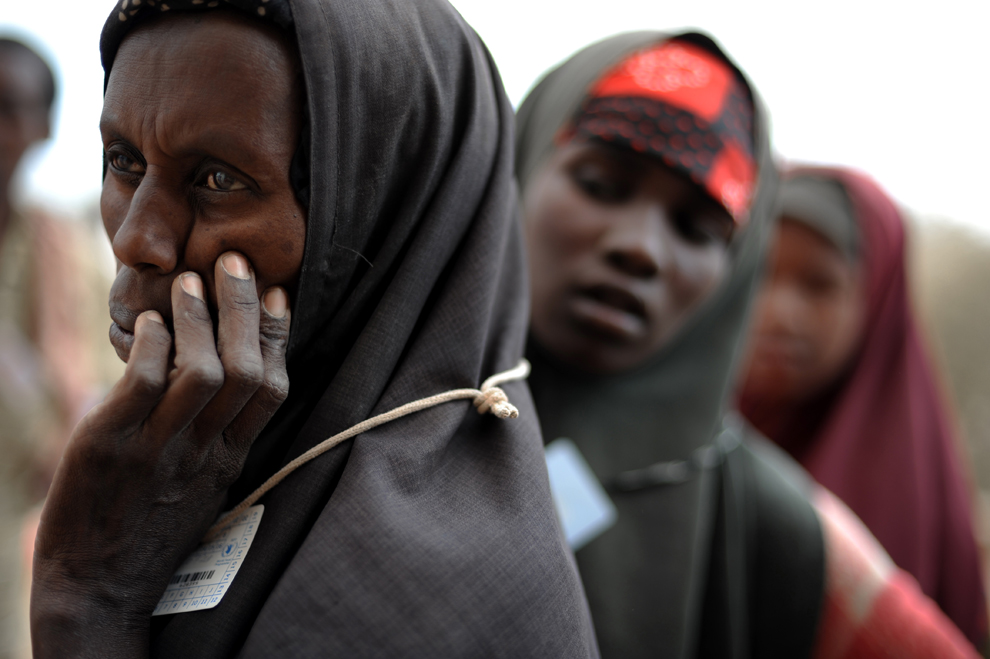

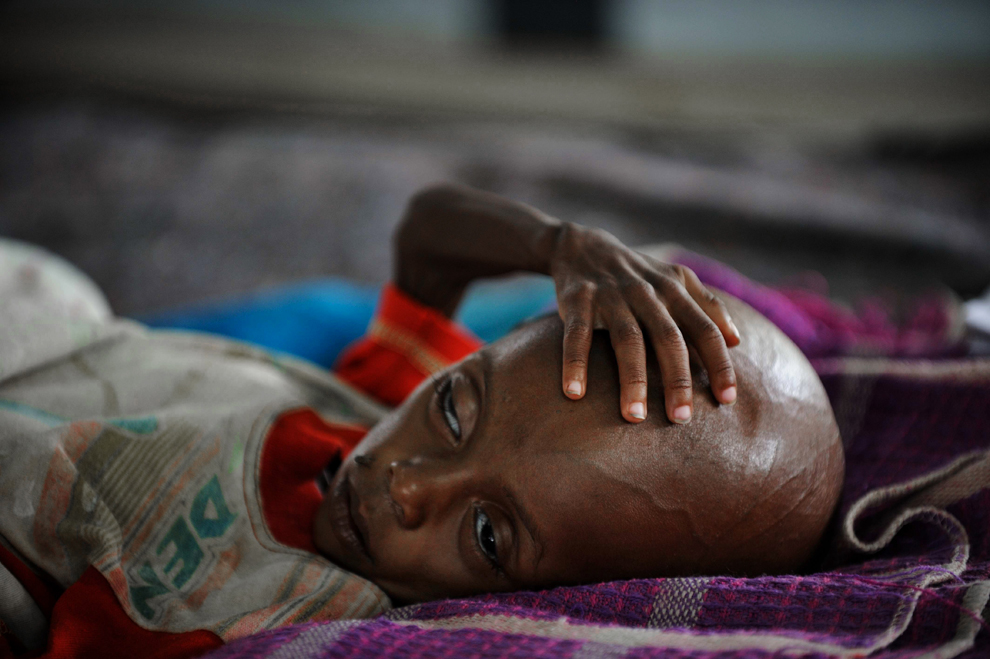

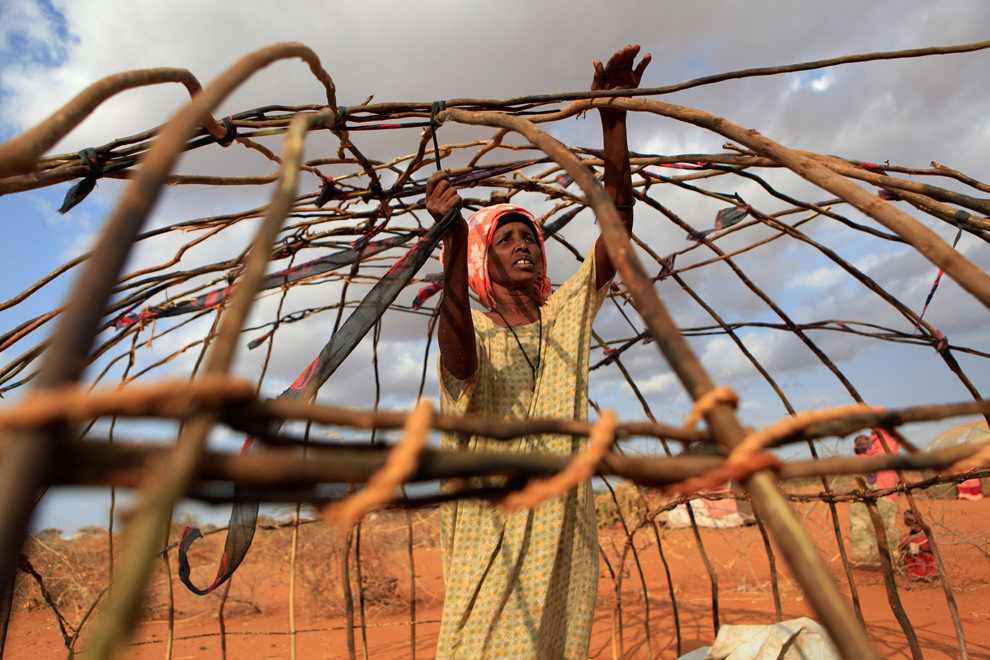
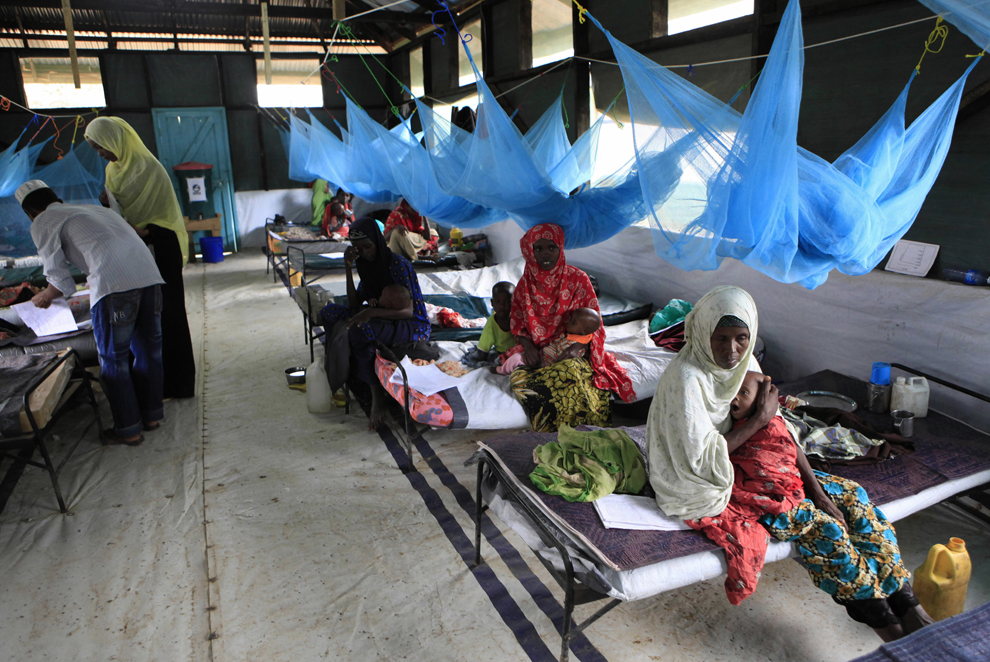
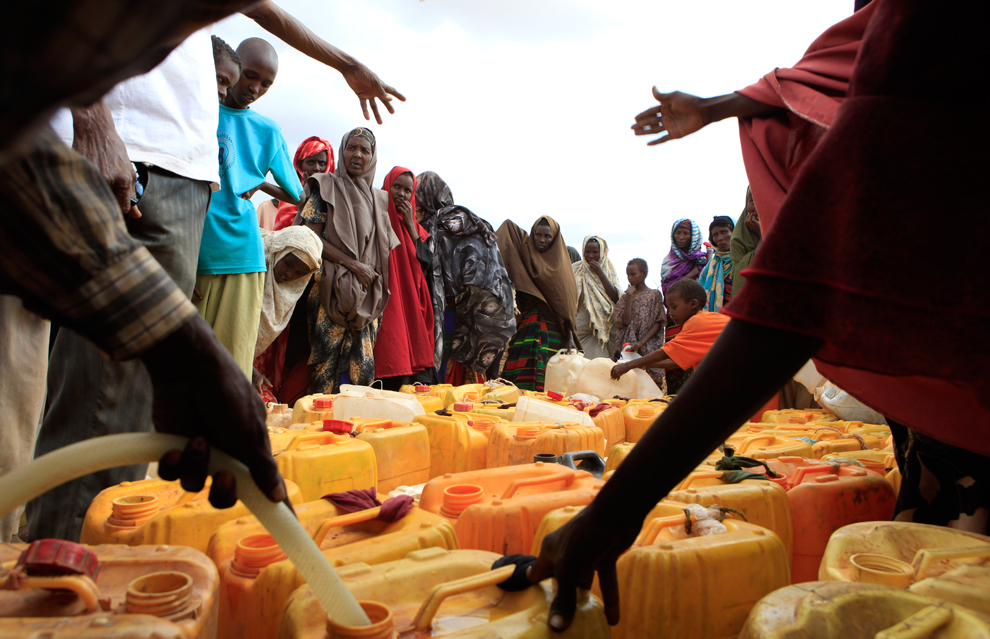
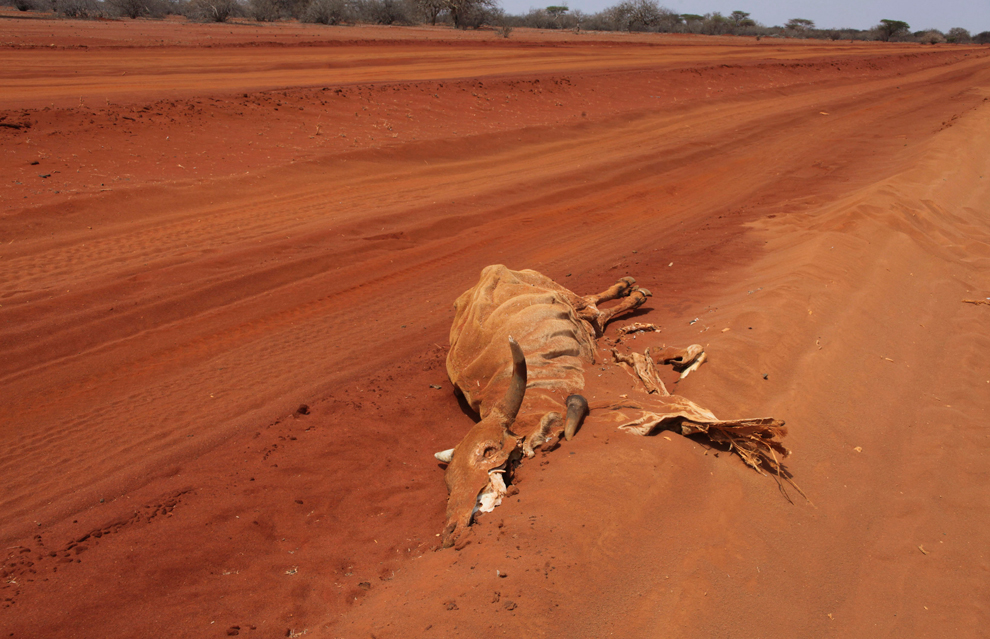
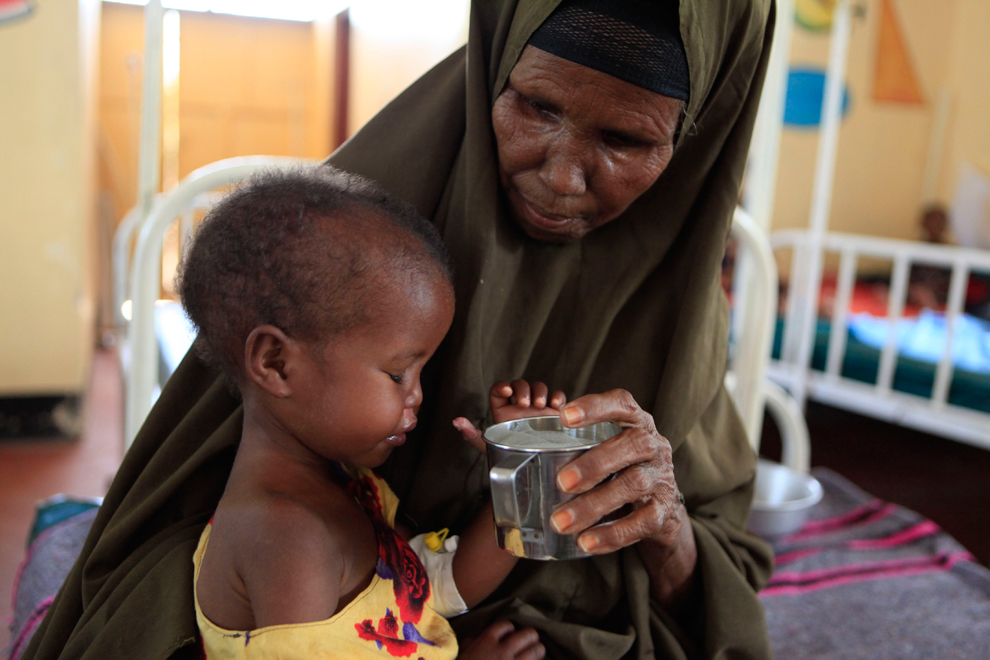
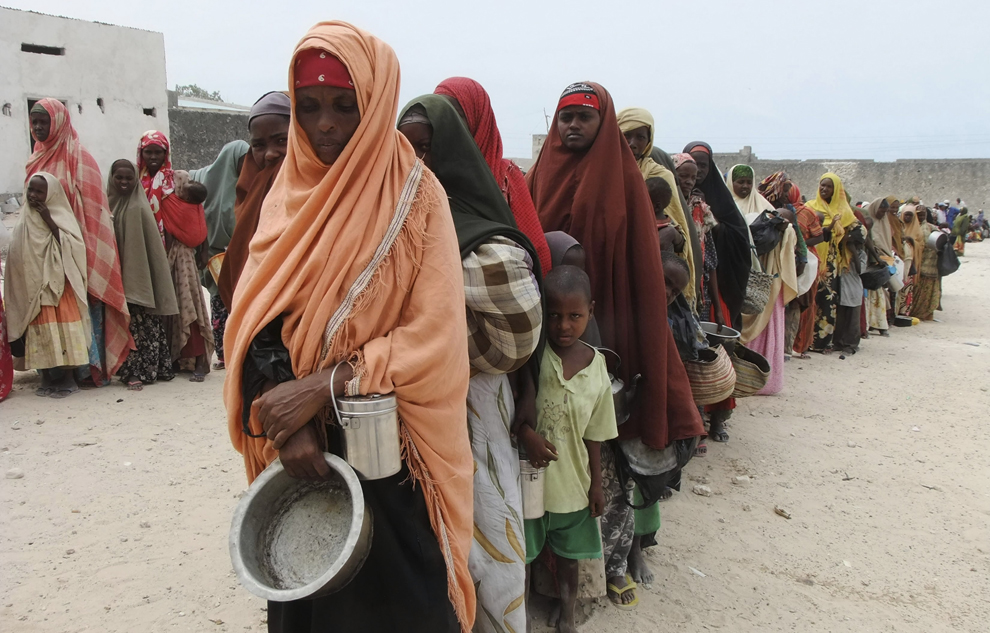
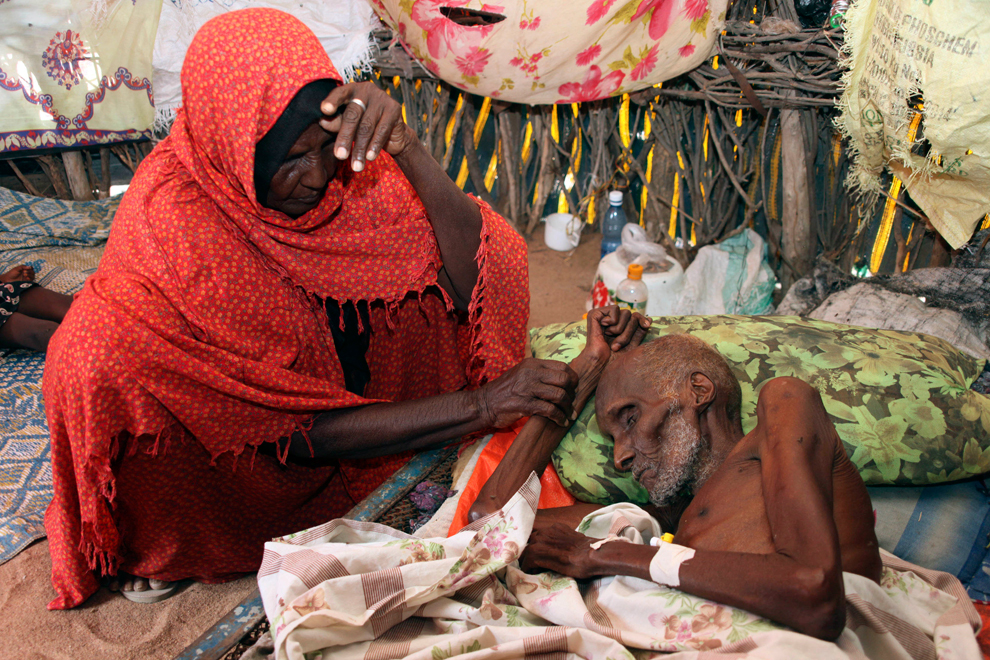
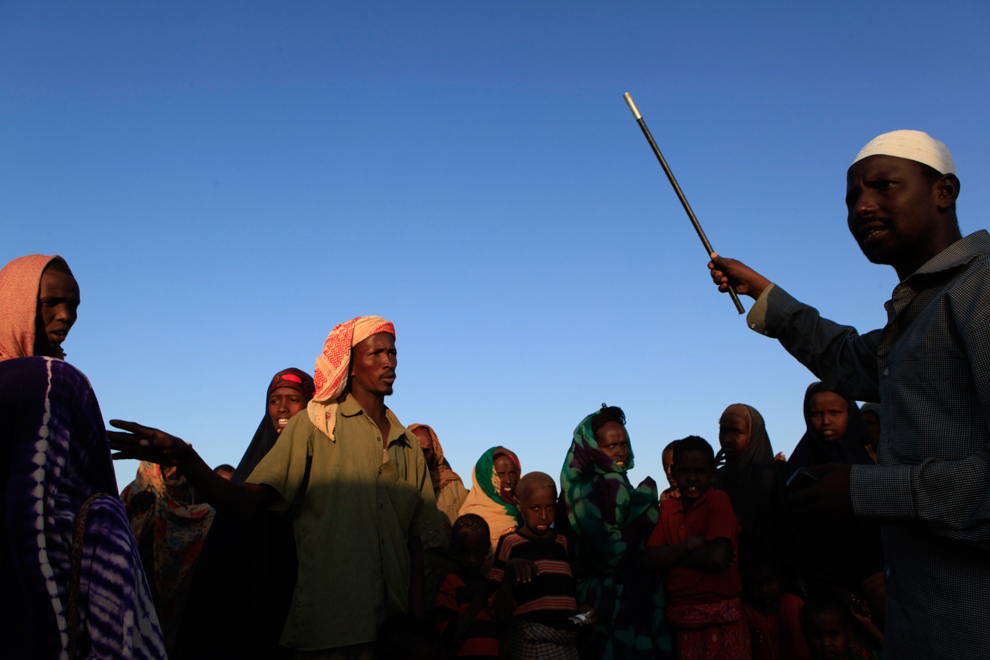
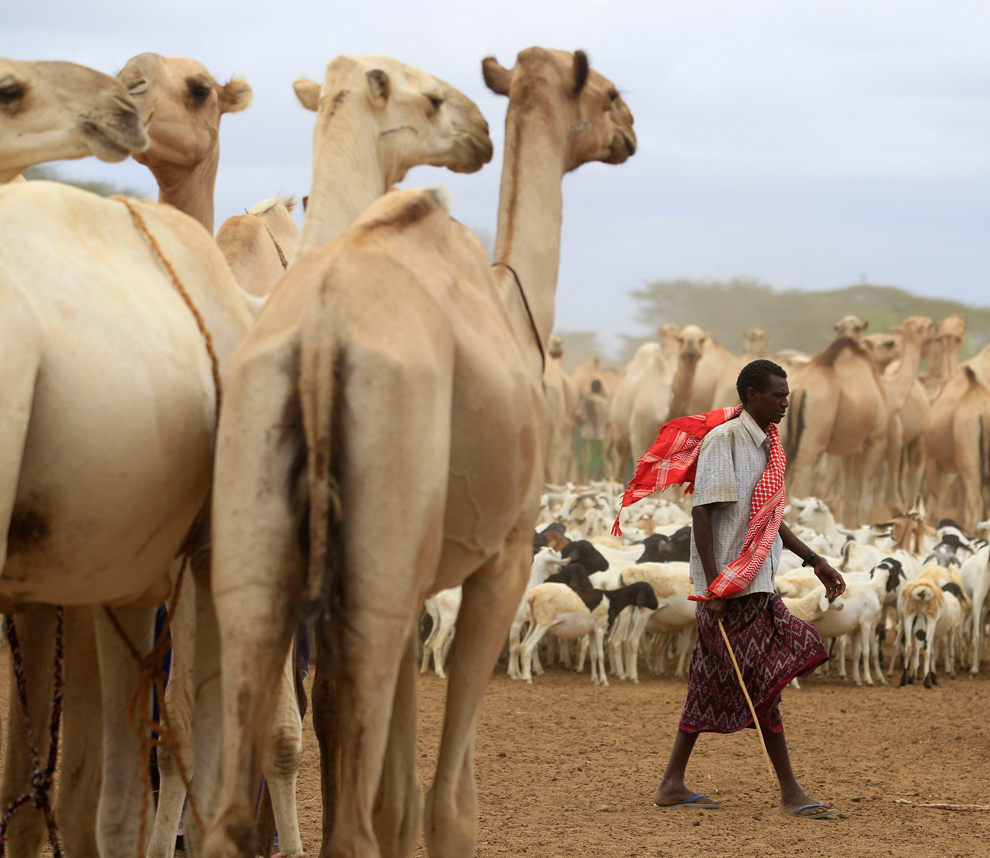
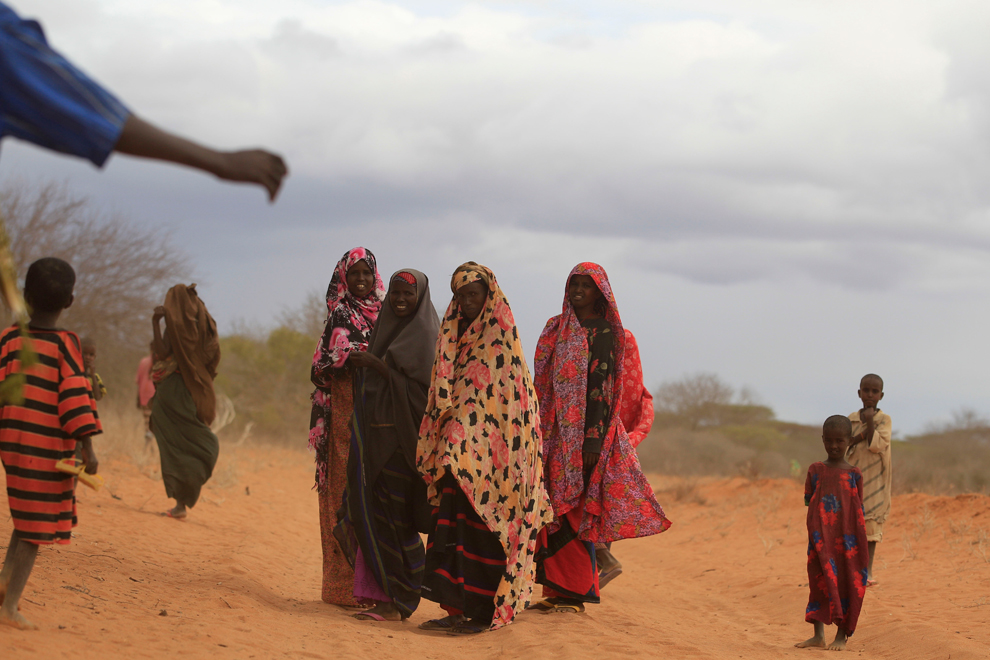

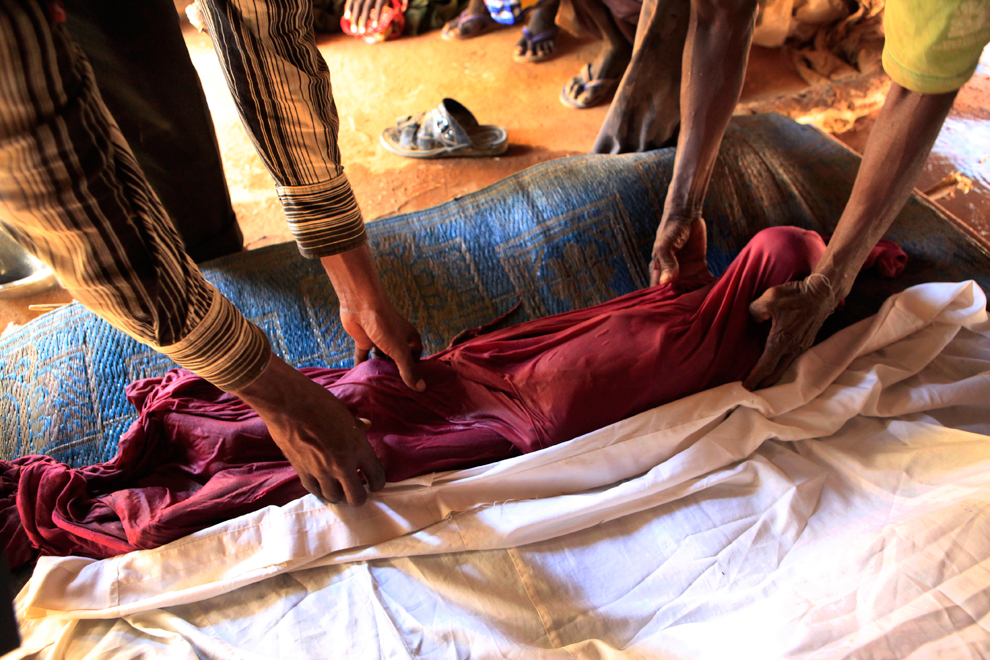

With a population of 370,000, Dadaab is the world's largest refugee camp. With drought conditions in the Horn of Africa combined with poor food distribution. The Kenyan camp is expected to house 450,000 refugees by the end of the year, according to Doctors Without Borders. The camp was built to accommodate 90,000. (Roberto Schmidt/AFP/Getty Images)


A woman, baby cradled in her arms, awaits help at a clinic run by Doctors Without Borders at Dadaab, Kenya. The influx of refugees has strained services and ened tensions at the camp. (Roberto Schmidt/AFP/Getty Images)

A Somali refugee drags a sack of food given to her at a distribution point at the Dadaab refugee camp on July 4. (Roberto Schmidt/AFP/Getty Images)

A Somali refugee receives a food ration for her and her family at a food distribution point at the Dadaab refugee camp on July 4.(Roberto Schmidt/AFP/Getty Images)

Somali refugees wait in line to receive aid at a food distribution point at Dadaab camp on July 4. About 1,300 Somalis arrive daily, mainly farmers and cattle herders, according to the United Nations refugees agency. (Roberto Schmidt/AFP/Getty Images)

Sixty-year-old Suban Osman sits with two of her malnourished grandchildren at a clinic run by Doctors Without Borders at the Dadaab refugee camp on July 4.(Roberto Schmidt/AFP/Getty Images)

Abdifatah Hassan, 11 months old, suffers from severe malnutrition at the Dadaab camp. (Roberto Schmidt/AFP/Getty Images)

A Somali man uses a water fountain at the Dadaab refugee camp on July 4. (Roberto Schmidt/AFP/Getty Images)

Nado Mahad Abdilli builds a makeshift shelter for her family in Iffou 2, an area earmarked for refugee camp expansion but yet to be approved by the Kenyan government, outside Dadaab on July 11. Earlier this month, attempts by authorities to remove unauthorized structures led to widespread rioting at the camp. (Rebecca Blackwell/Associated Press)

Somalis care for their young children who are being treated for malnutrition at a Doctors Without Borders clinic in Dagahaley Camp, outside Dadaab, on July 11. UN refugee chief Antonio Guterres said that drought-ridden Somalia is the "worst humanitarian disaster" in the world. He had met with refugees who endured unspeakable hardship to reach the world's largest refugee camp. (Rebecca Blackwell/Associated Press)

cRecently arrived Somali refugees wait to fill jerry cans with water at a newly-installed tank in Iffou 2, an area earmarked for refugee camp expansion, outside Dadaab, Kenya, July 11. (Rebecca Blackwell/Associated Press)
A malnourished child is held in her grandmother's arms at Wajir District hospital, Wajir town, Kenya, on July 6. The worst drought in the Horn of Africa has sparked a severe food crisis and high malnutrition rates, with parts of Kenya and Somalia experiencing pre-famine conditions, the United Nations has said. More than 10 million people are now affected in drought-stricken areas of Djibouti, Ethiopia, Kenya, Somalia and Uganda and the situation is deteriorating. (Sayyid Azim/Associated Press)

The carcass of a cow decomposes on the side of a road near Lagbogal, Kenya. (Sayyid Azim/Associated Press)
An Al Shabaab soldier walks along women waiting for food distribution at a refugee camp in Shebelle, Somalia. Battles among Islamic militants, security soldiers from neighboring nations, and government forces have exacerbated the famine. Al Shabaab has recently lifted a ban on humanitarian agencies supplying food to millions of Somalis. (Feisal Omar/Reuters)
A Somali woman waits to be registered as a refugee at Dagahaley Camp, outside Dadaab, Kenya, on July 13. More than 11 million people in the Horn of Africa are confronting the drought and need urgent assistance to stay alive, UN Secretary-General Ban Ki-moon said. (Rebecca Blackwell/Associated Press)
Two-year-old Shiniyo, bundled in her mother's arms. is staying at a clinic run by Doctors Without Borders at Dadaab on July 4. Suffering from severe malnutrition, Shiniyo arrived at the camp 15 days earlier with her mother and six other siblings after they fled their Somali homeland. (Roberto Schmidt/AFP/Getty Images)

A Somali girl being treated for severe malnutrition pushes away a cup as a woman tries to feed her at a hospital operated by the International Rescue Commission, at Hagadera Camp outside Dadaab, Kenya, on July 9. (Rebecca Blackwell/Associated Press)

Somali women and children await the distribution of food at a camp in Mogadishu, the nation's capital. Jumbo, a local organization, set up the camp for refugees fleeing southern Somalia. Thousands of people have arrived in Mogadishu over the past two weeks seeking assistance and the number is increasing by the day, officials say. (Farah Abdi Warsameh/Associated Press)

Duba Dagane tries to help her husband, Abdi Ibrahim, who is suffering from malnourishment, in Lagbogal, Kenya, on July 6. (Sayyid Azim/Associated Press)
A Somali girl peers through layers of fencing and barbed wire as she waits with her family to register as refugees in Iffou Camp, outside Dadaab, Kenya, July 14. Hundreds of Somali children have been left for dead on the long, dry journey to the world's largest refugee complex in Dadaab.(Rebecca Blackwell/Associated Press)
Somali children rest inside their makeshift shelter in southern Mogadishu, on July 14. In addition to the refugees fleeing to Kenya, tens of thousands of Somalis have sought shelter within the troubled state. (Ismail Taxta/Reuters)

A camp worker warns newly-arrived Somalis to wait their turn at a reception center where they will be registered as refugees in Dagahaley Camp, outside Dadaab, Kenya, on July 13. (Rebecca Blackwell/Associated Press)
Kenyan police secure an area where recently-arrived refugees are living in makeshift shelters before Prime Minister Raila Odinga tours the outskirts of Dagahaley Camp, outside Dadaab, on July 14. East Africa's drought is battering Somali children, hundreds of whom have been left for dead on the long, dry journey to the world's largest refugee complex in Dadaab. (Rebecca Blackwell/Associated Press)

A herder walks along an animal market in the border town of Dobley, Somalia, on July 13. (Rebecca Blackwell/Associated Press)

A group of Somali women and children fleeing hunger in their drought-stricken nation walk along the main road leading from the Somalian border to the refugee camps around Dadaab, Kenya, on July 13. In June alone, 54,000 refugees poured into the camps. (Rebecca Blackwell/Associated Press)
Ethiopian farmer Halake Jilo Gimbe, 60, and his daughter walk among the carcasses of a decimated cattle herd. Out of 40 cows, only four have survived the drought in the village of Galma Roba. In all, about 10 million people across the Horn of Africa now rely on emergency food aid, according to the UN World Food Programme. (Glyn Riley/HelpAge International via Reuters)

Newly-arrived Somali refugees wait in line to receive initial food aid after registering as refugees at a reception center in Dagahaley Camp, outside Dadaab, on July 12. UN refugee chief Antonio Guterres said that drought-ridden Somalia is the "worst humanitarian disaster" in the world, after meeting with refugees who endured unspeakable hardship to reach the world's largest refugee camp in Dadaab. (Rebecca Blackwell/Associated Press)

Men prepare the body of Aden Ibrahim, 4, for burial in accordance with Somali tradition, inside the makeshift shelter where Aden's family lives among other newly-arrived Somali refugees, on the outskirts of Iffou II Camp, outside Dadaab, Kenya, on July 12. Doctors were unable to save Aden, who died of diarrhea-related dehydration after four days of inpatient care. (/Rebecca Blackwell/Associated Press)
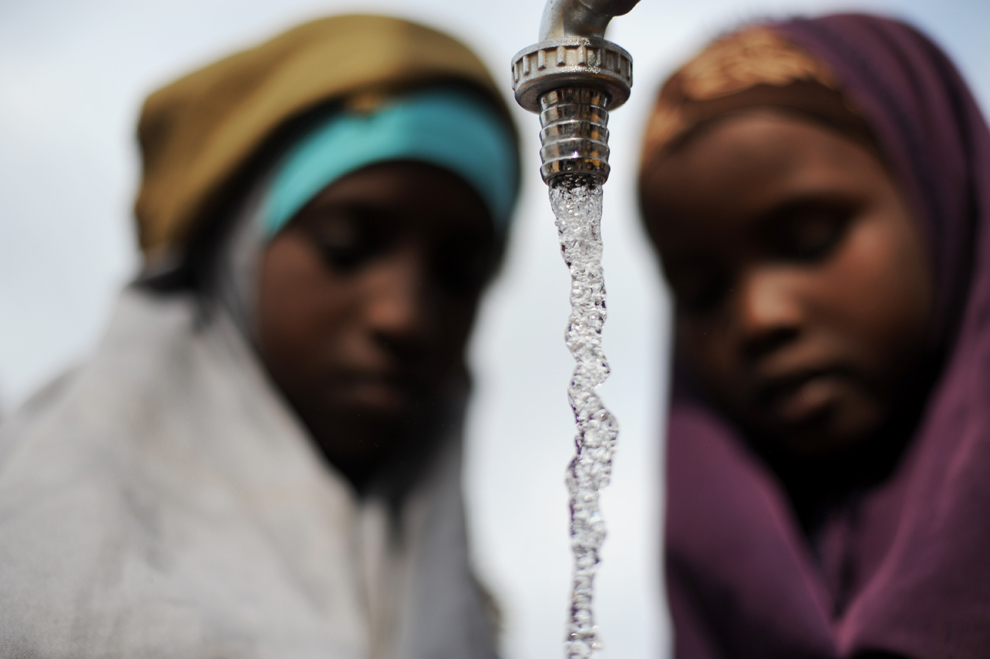


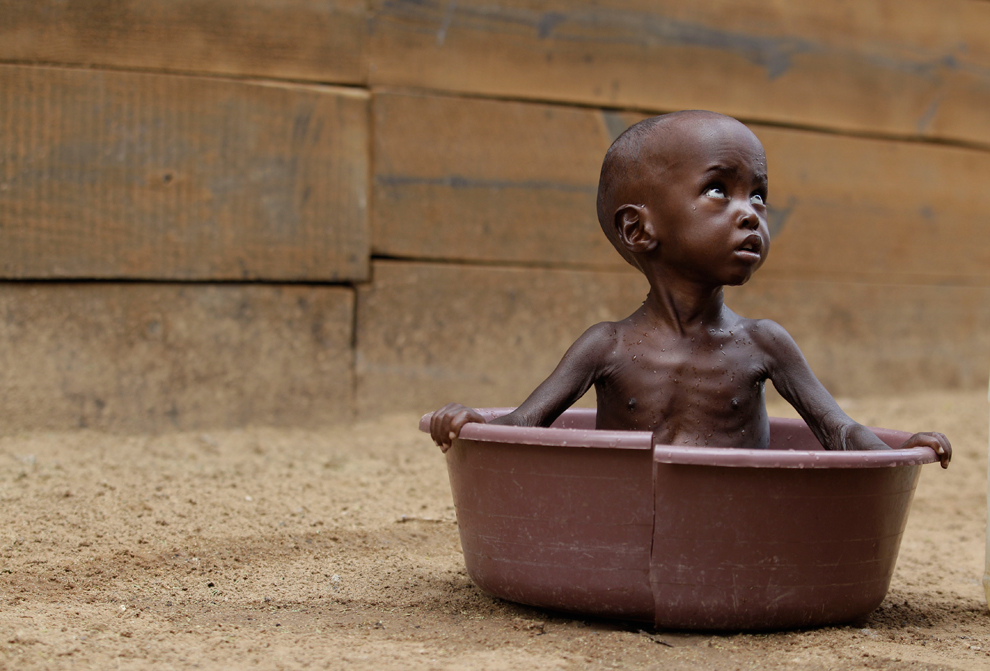



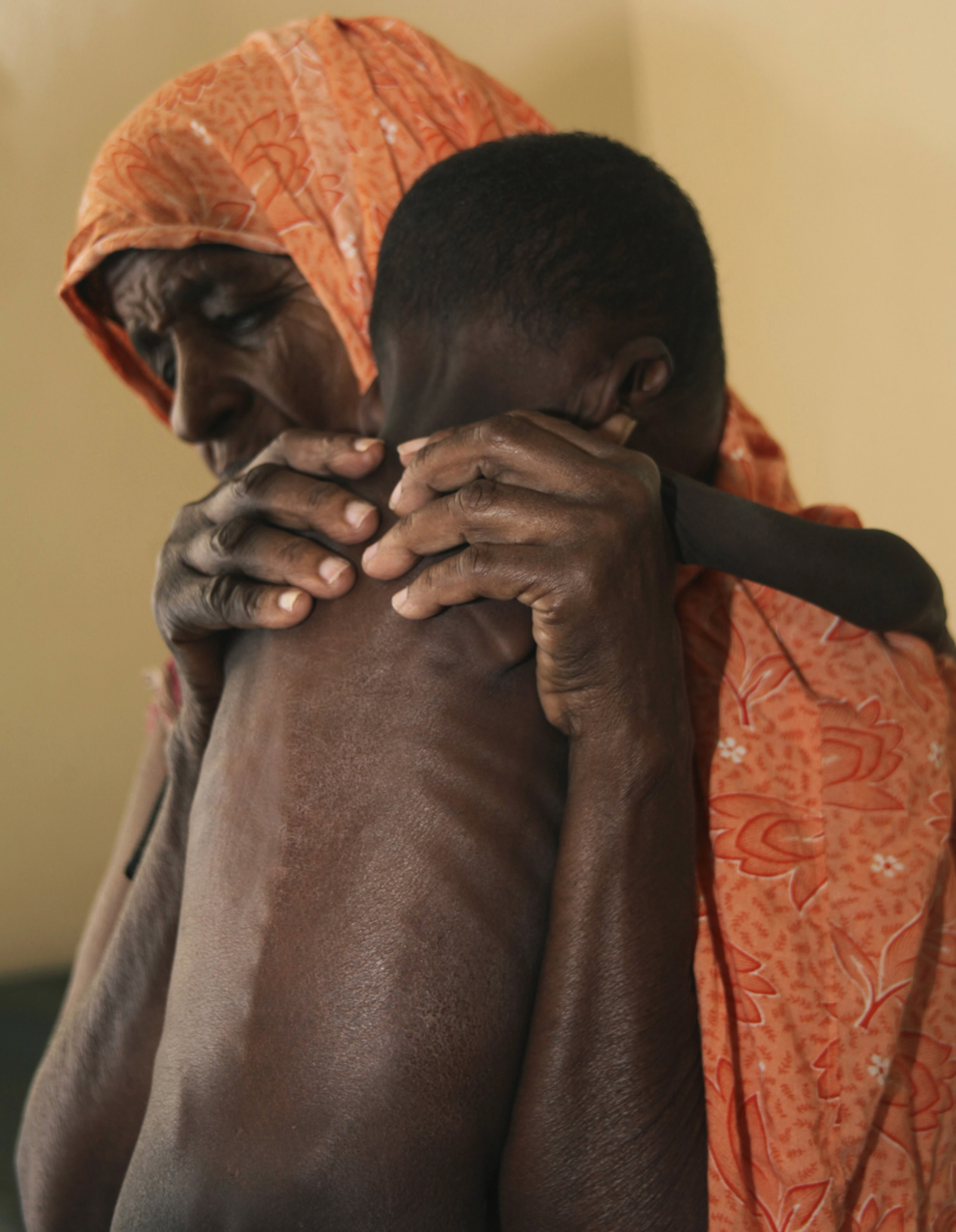
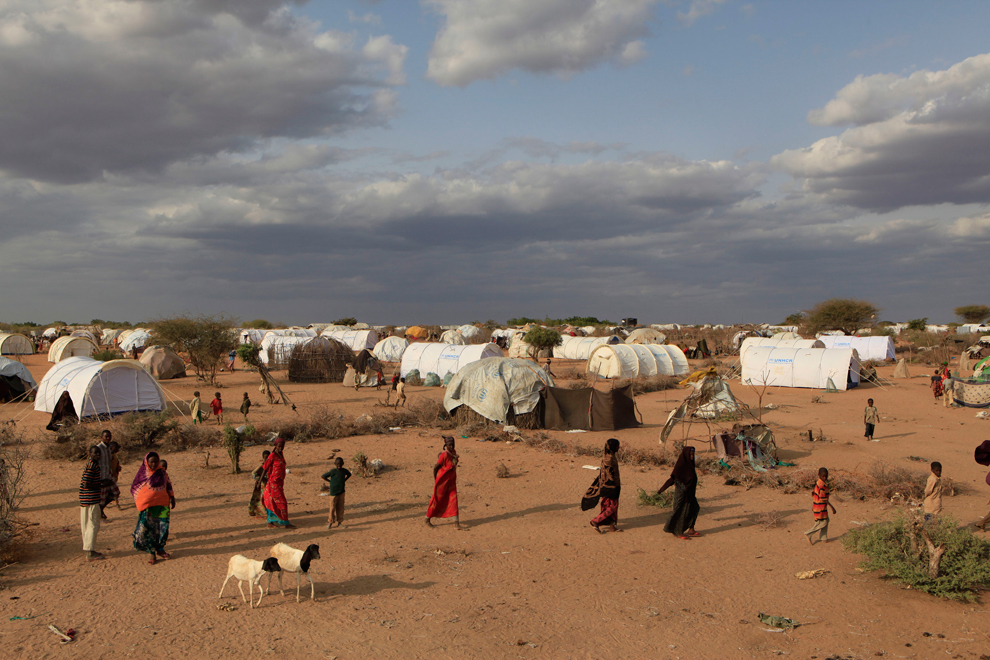
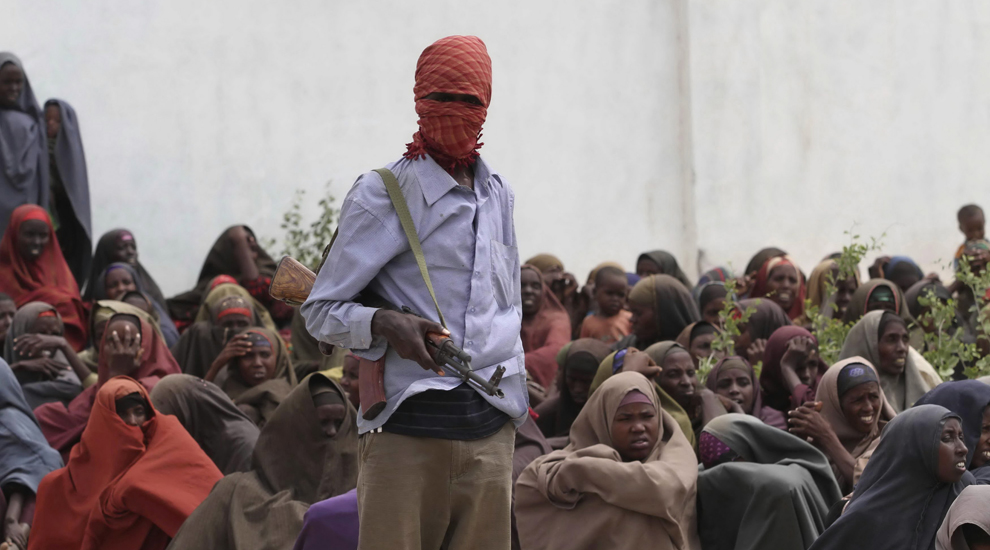
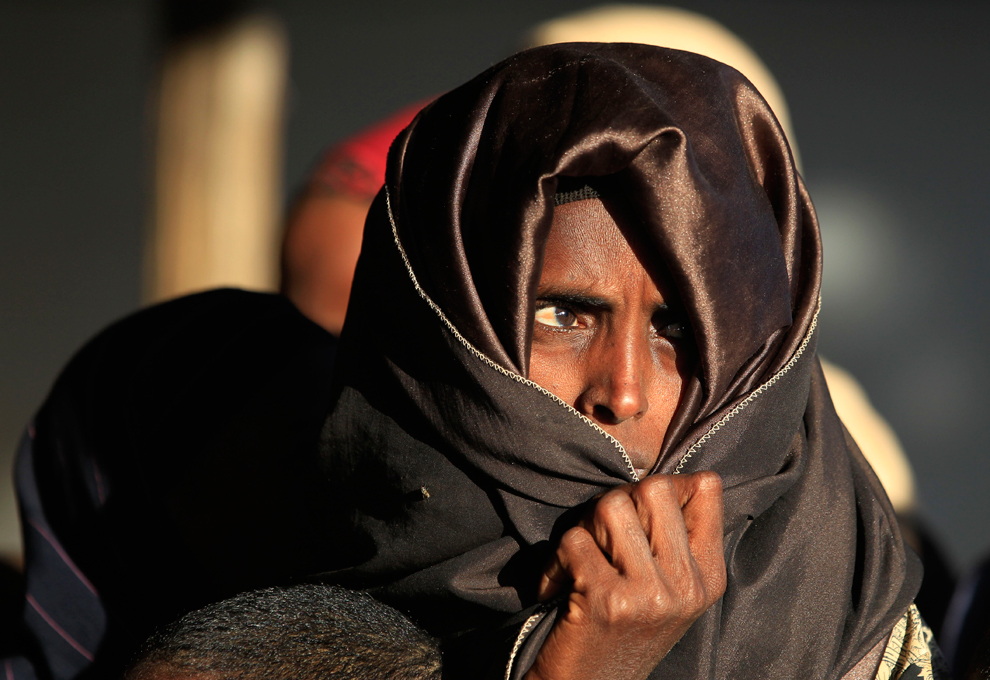

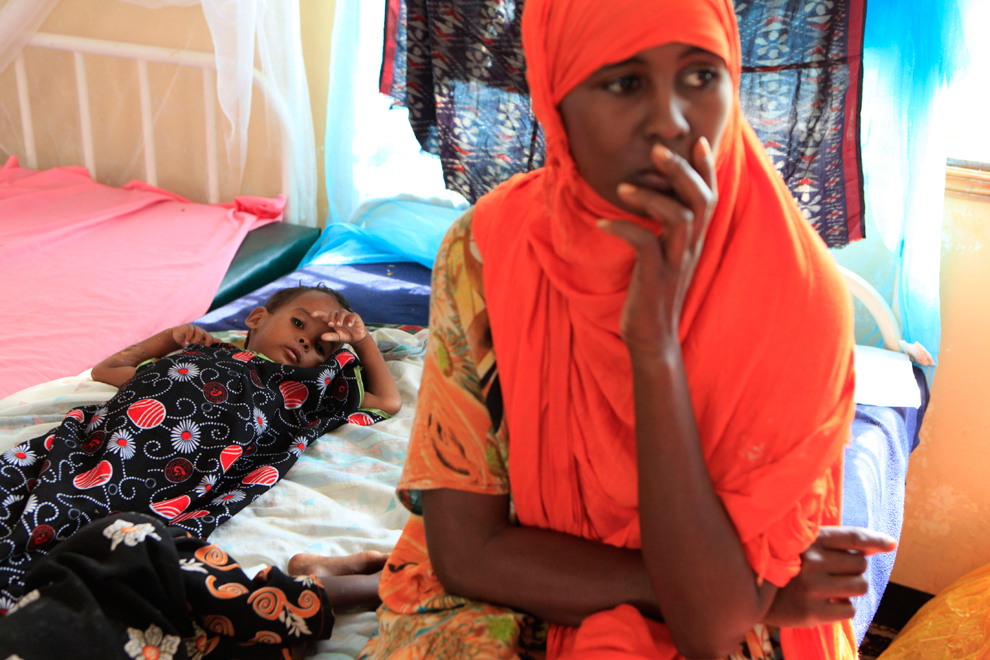
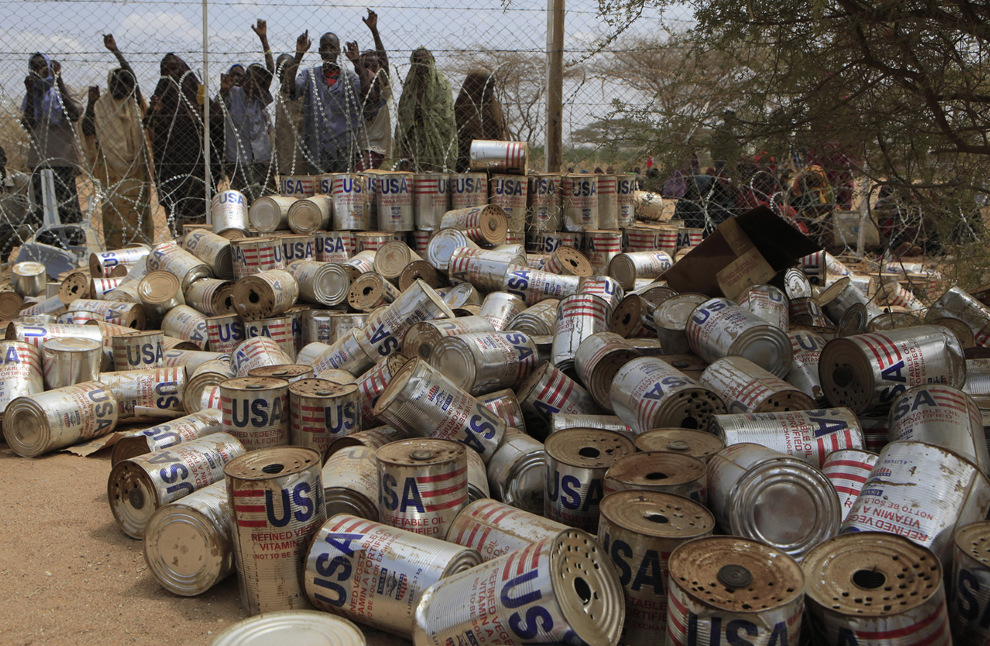
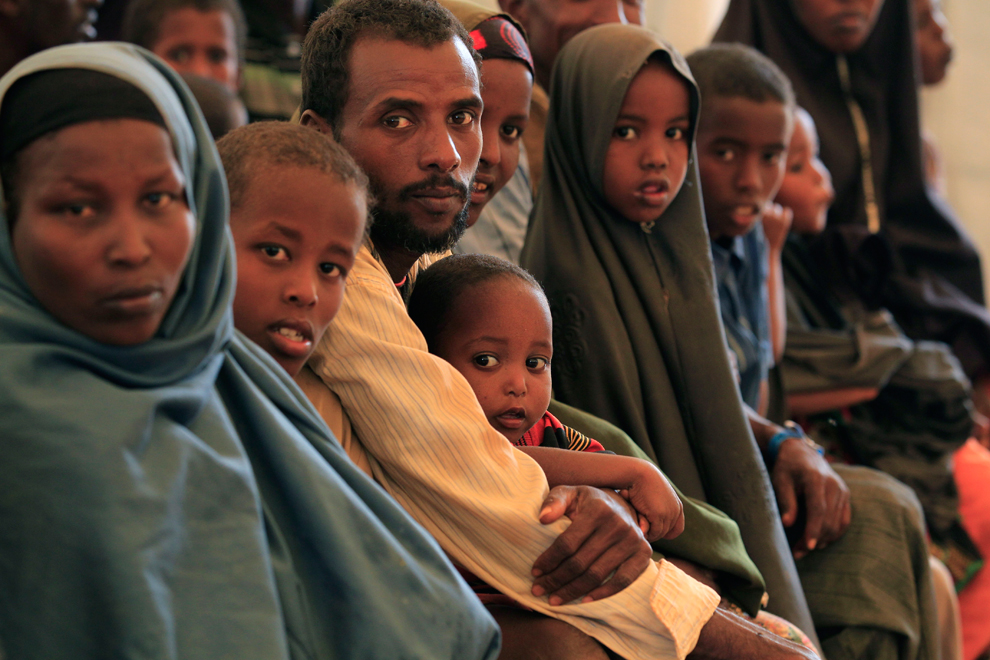
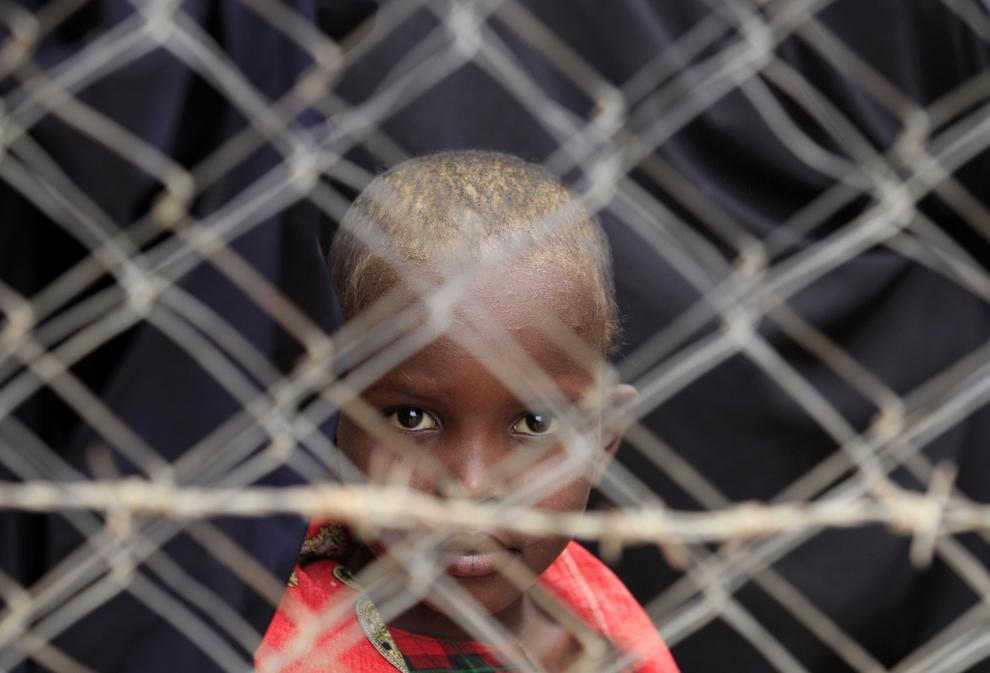
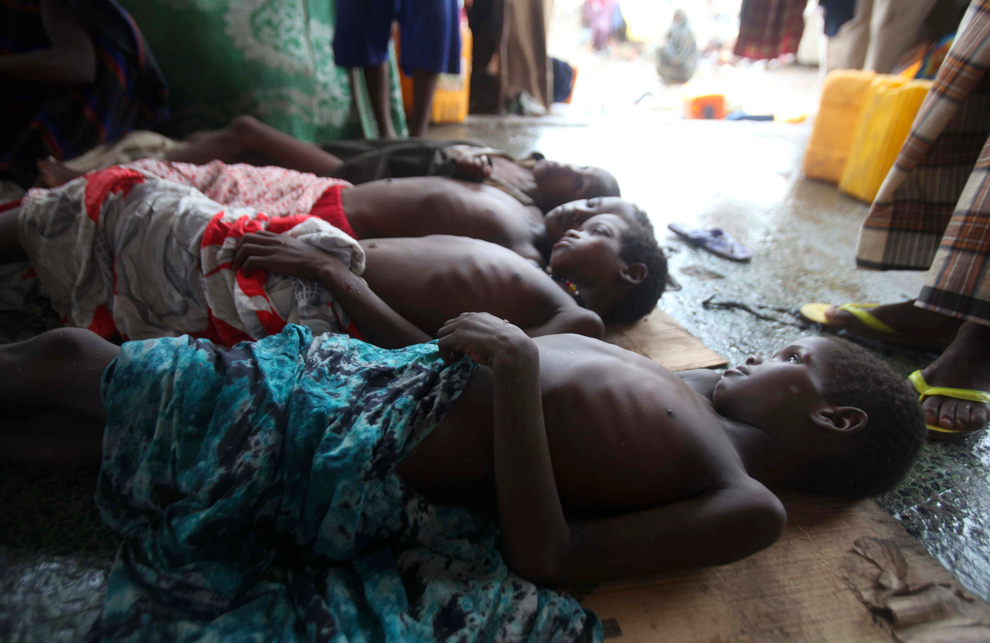
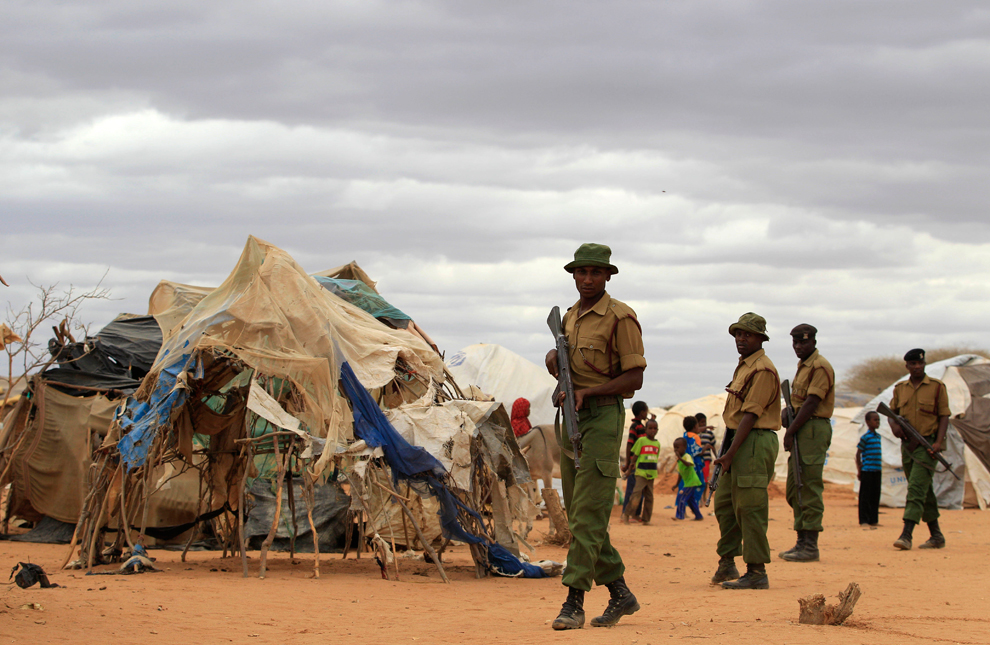
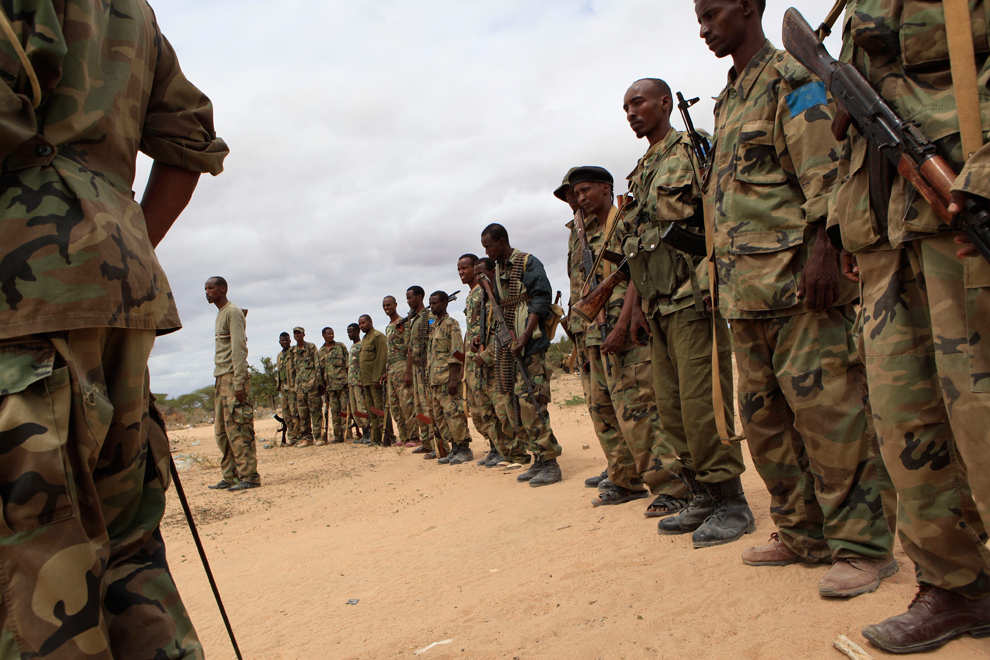
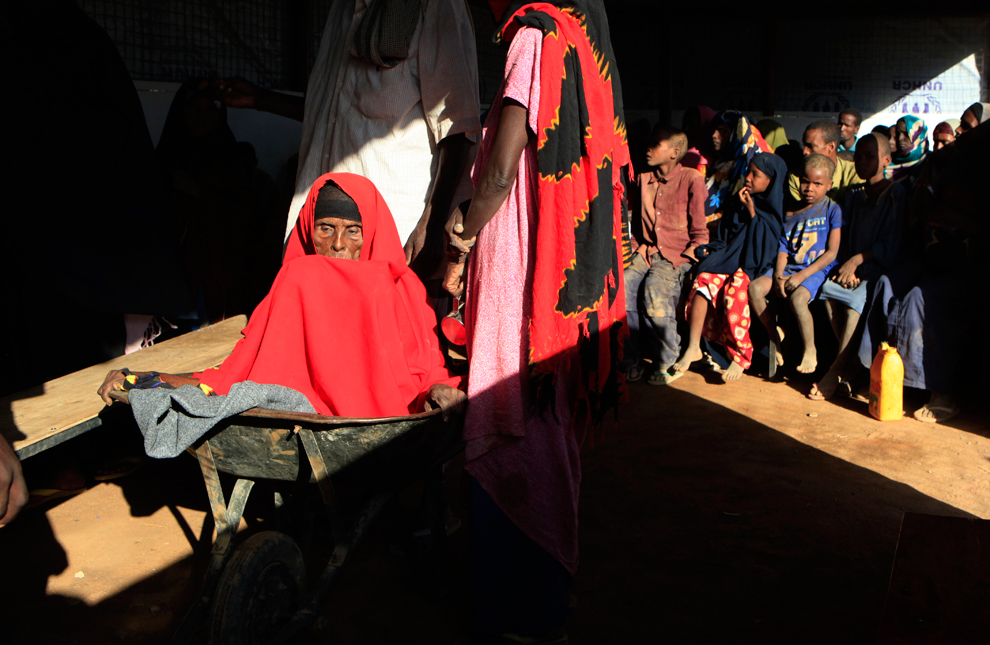
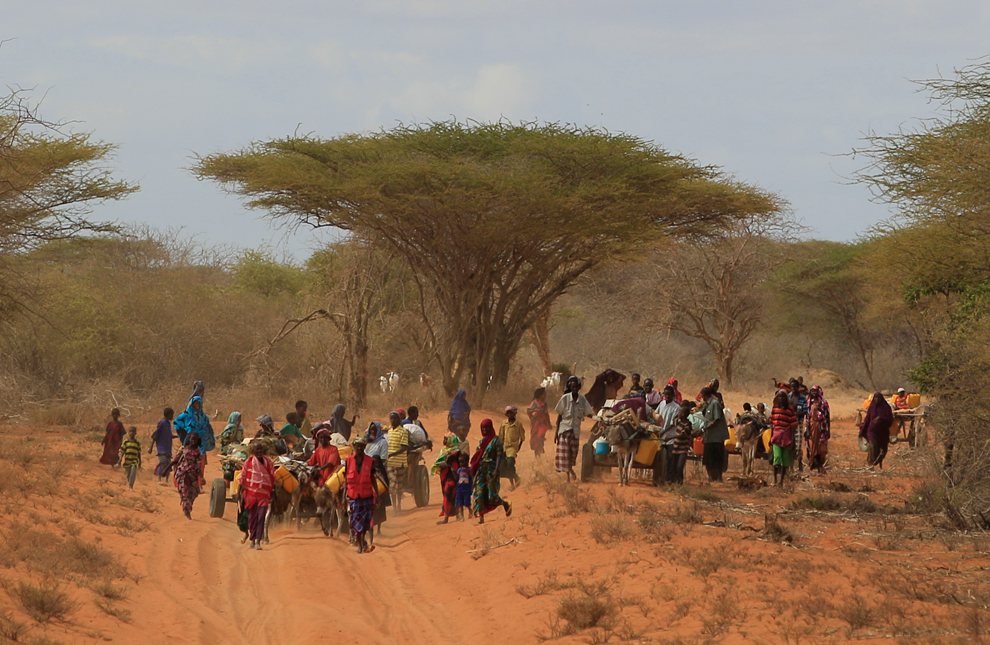
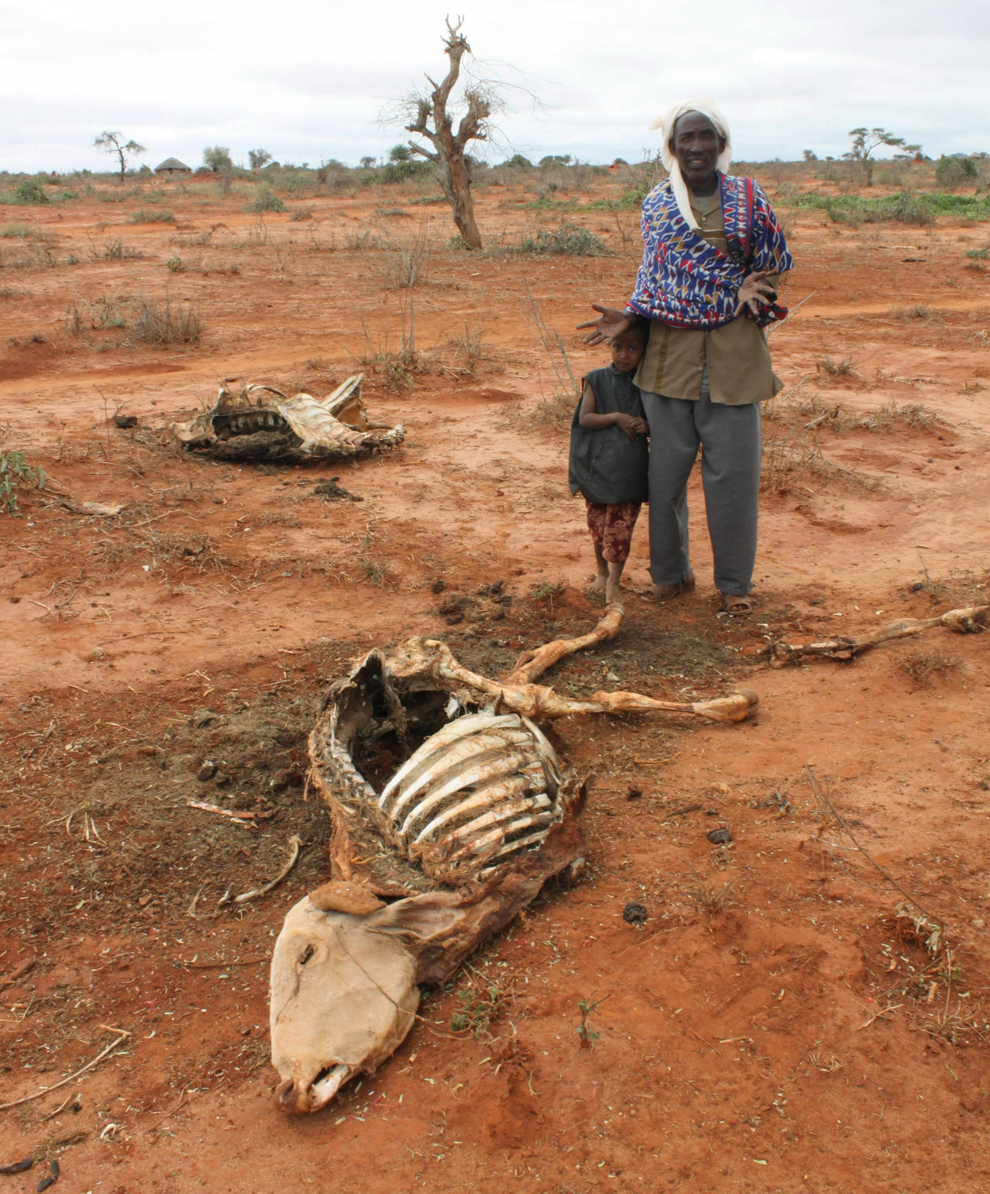

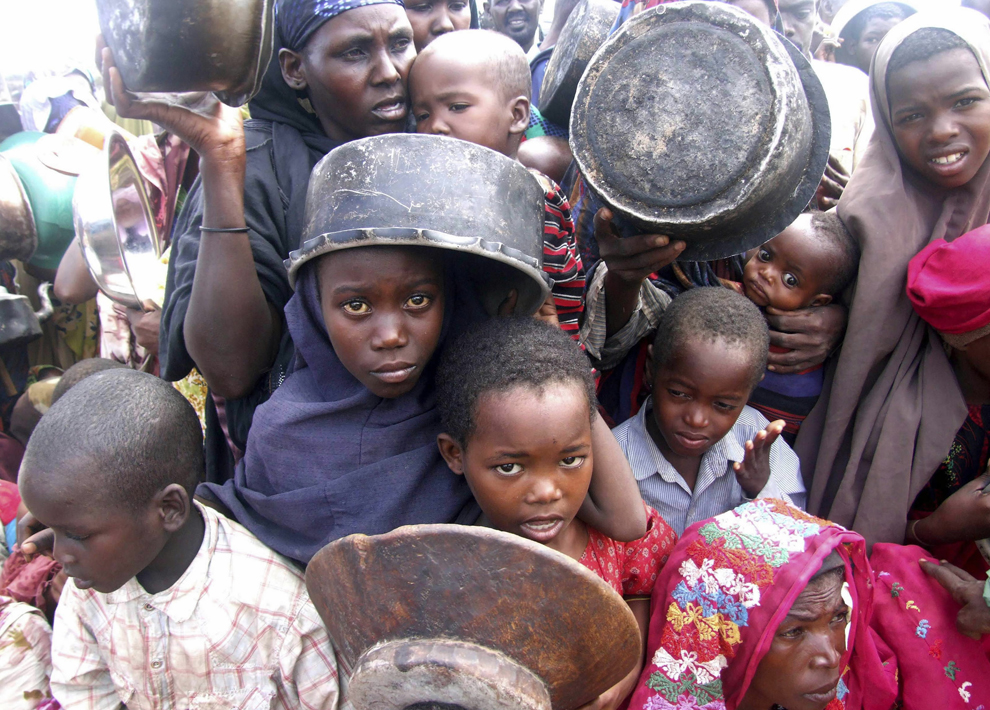
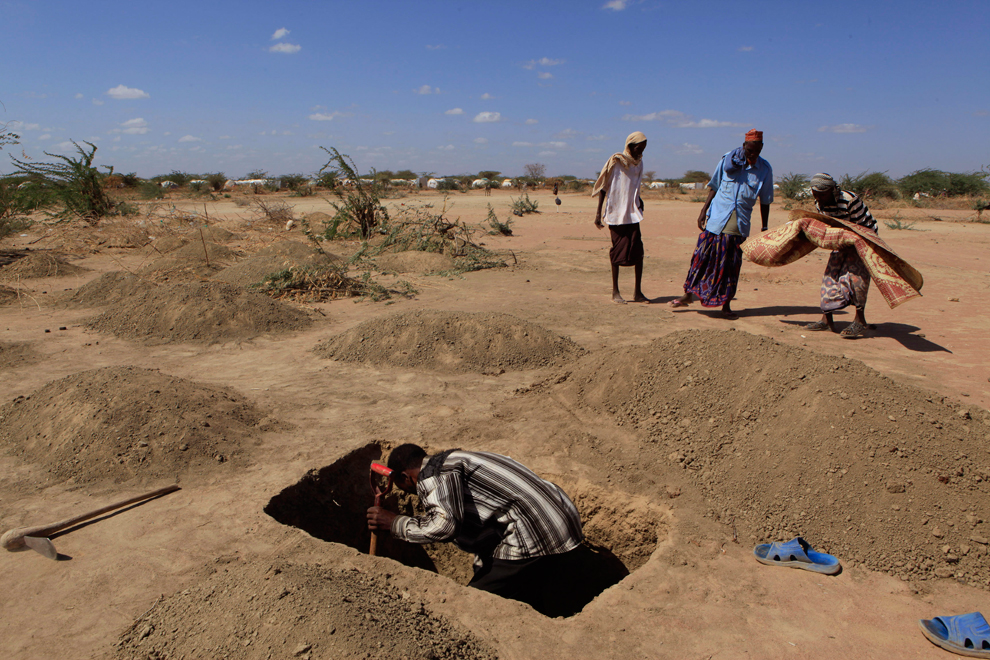
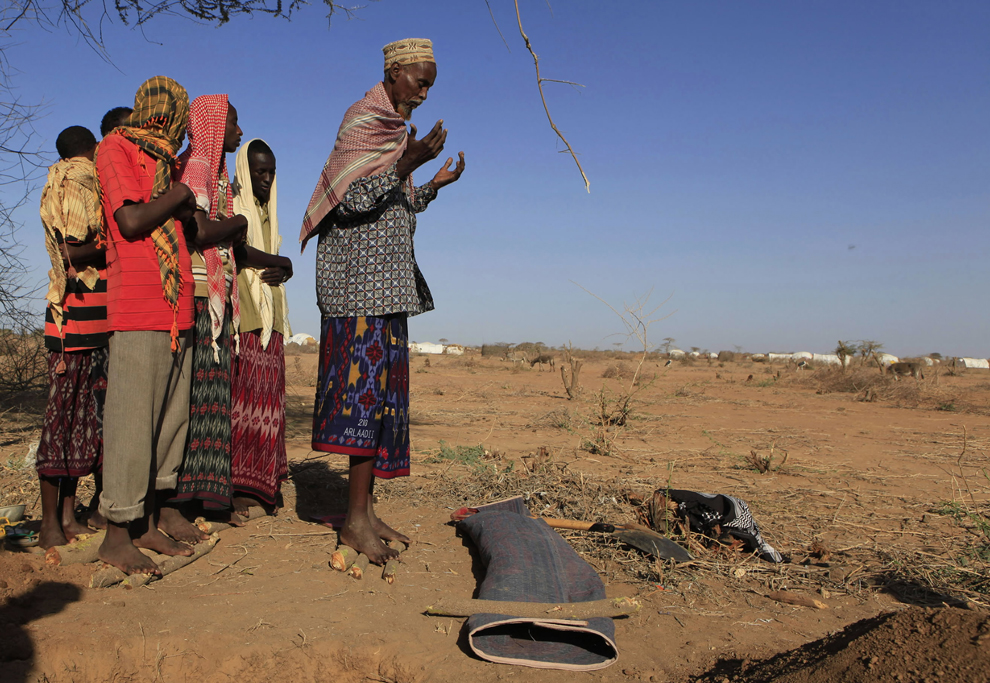
No comments:
Post a Comment